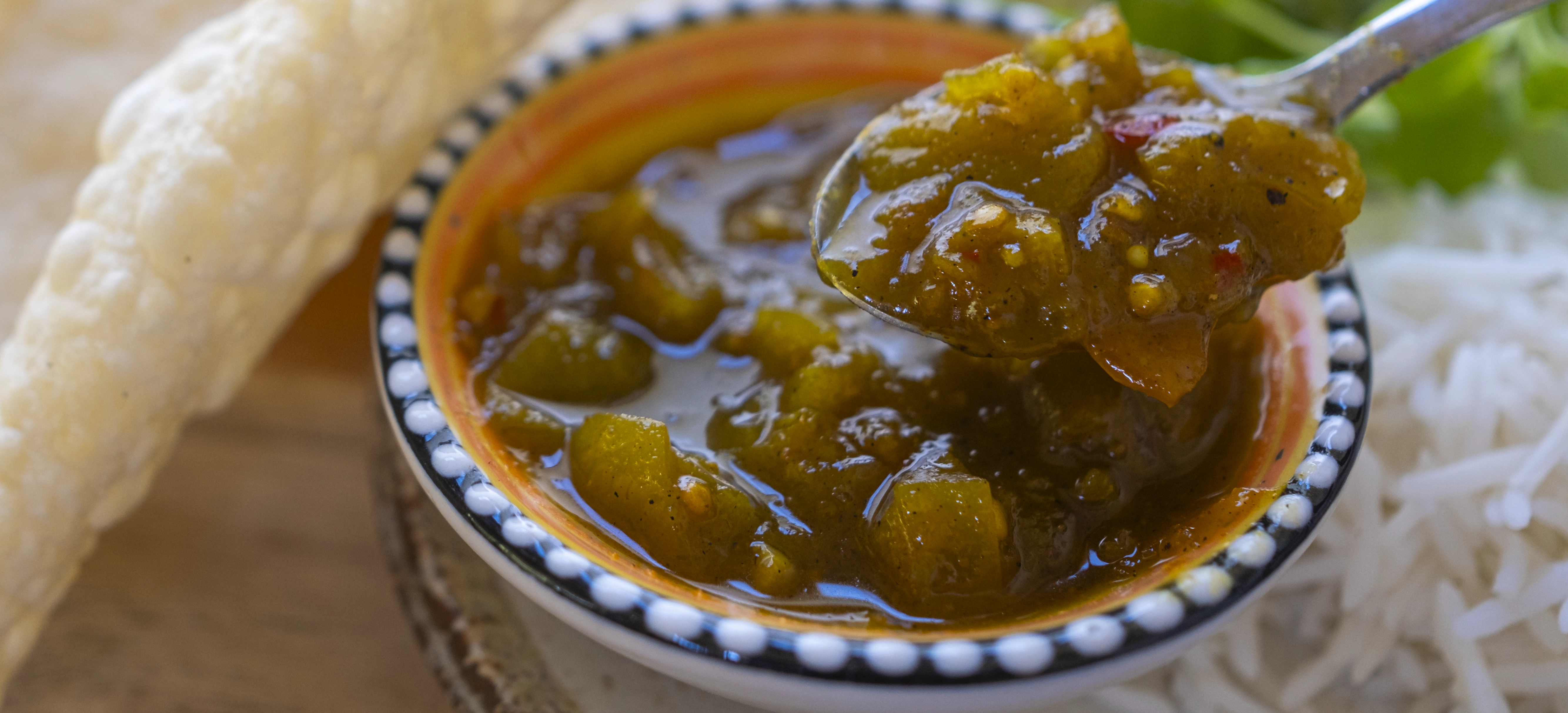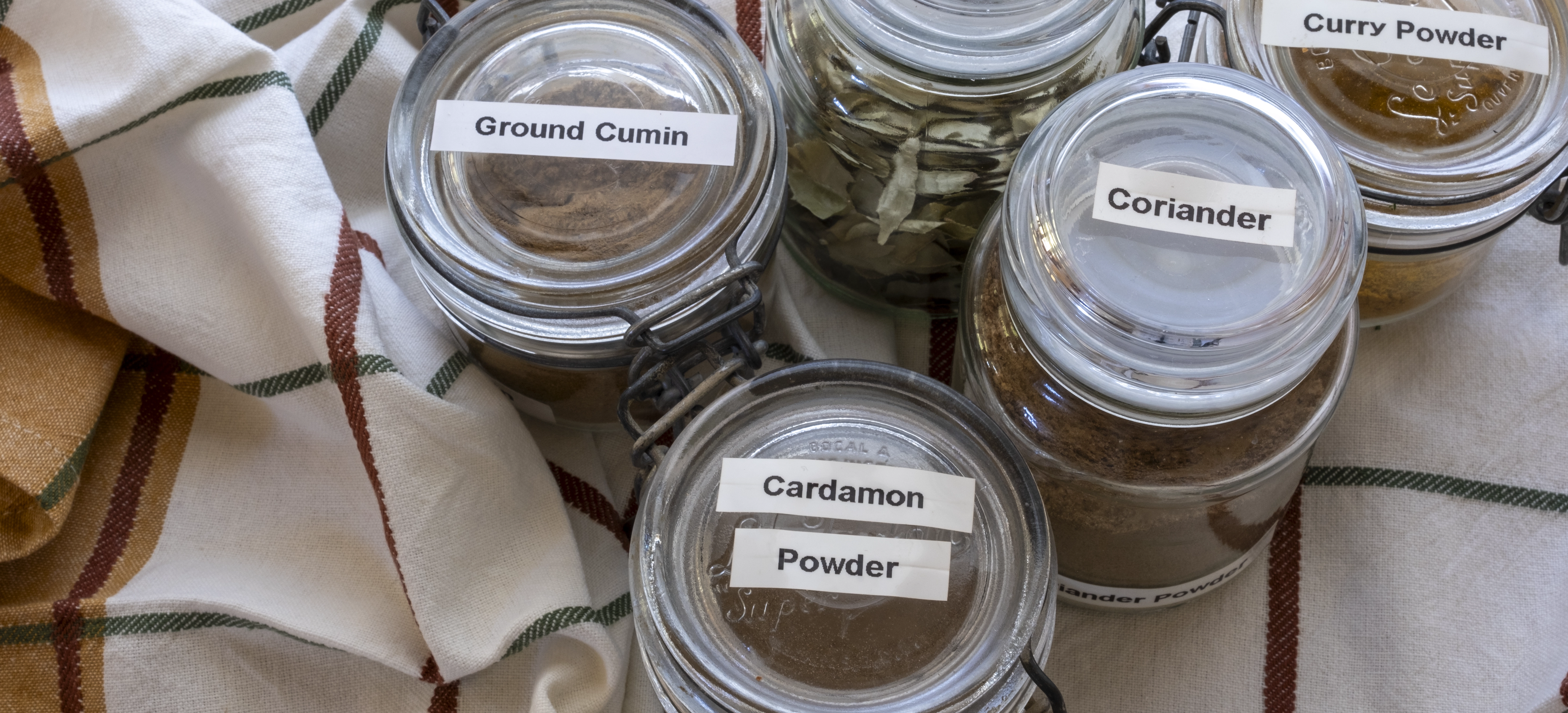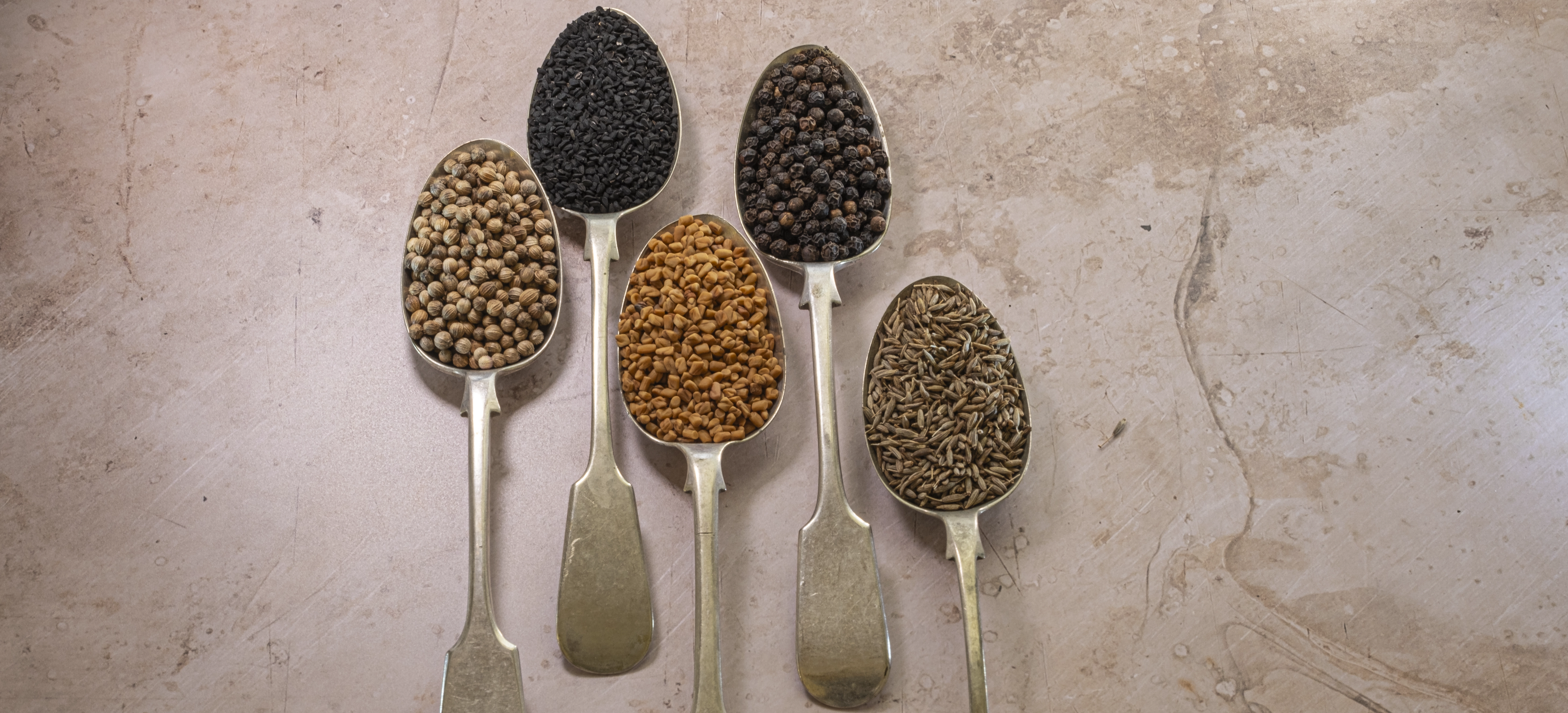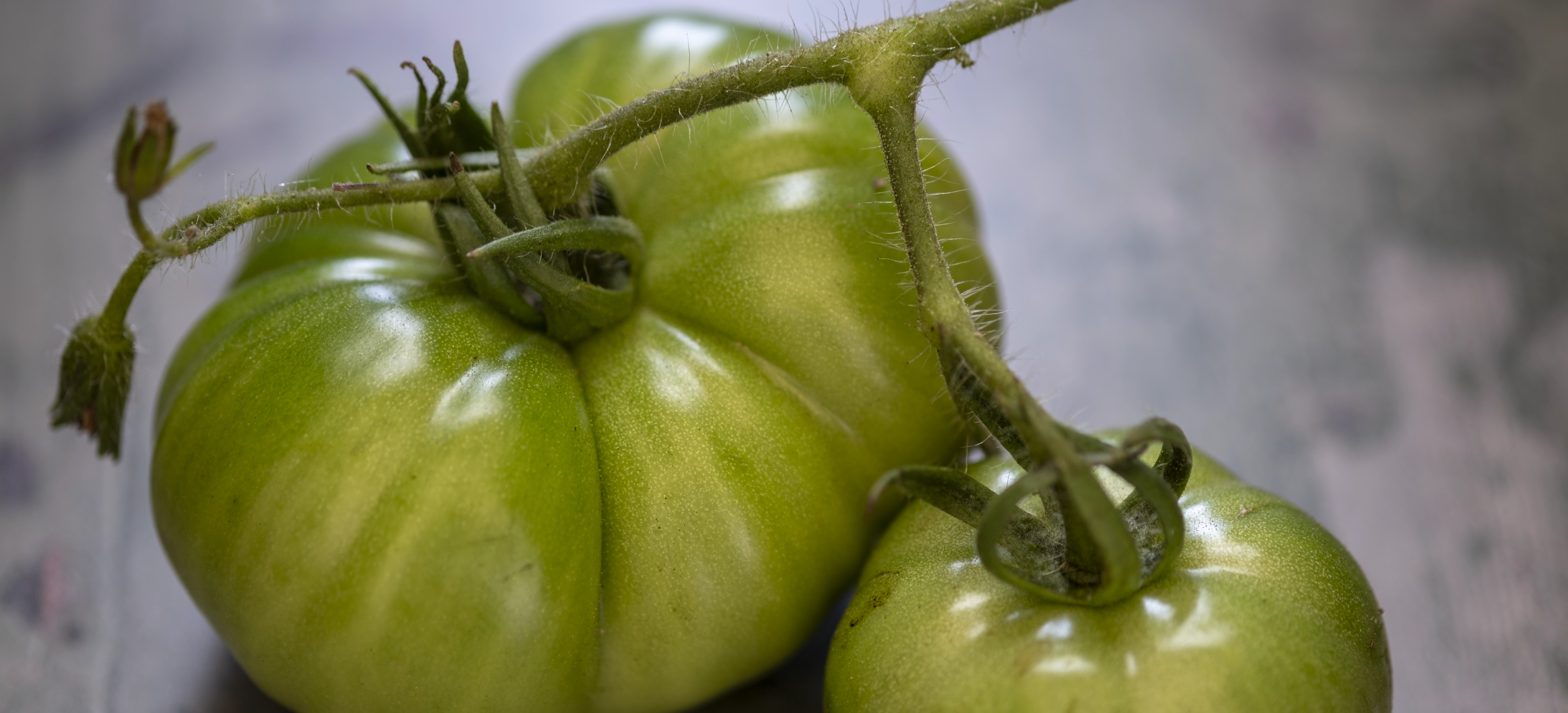Indian Spiced Green Tomato Chutney
- Pickles, Chutney, Relish & Sauces
- Preserves

The vibrancy and fragrance of the East is captured in this unique green tomato chutney. When green tomatoes are abundant, make as many jars of this Indian inspired chutney as you can. It makes a wonderful gift and is very versatile. Use liberally as an accompaniment to a curry dish or spice up a rice bowl, it adds another dimension to sandwich, wrap and panini fillings or mix it with yogurt or light ricotta cheese to make a quick, easy and very tasty dip.
- Preparation Time:
- 40 minutes
- Cooking Time:
- 60 minutes
- Quantity:
- 8 x 300 ml jars
PREPARATION
Have hot sterilised glass jars and lids with a protective lining ready at the bottling stage

INGREDIENTS
- 3 tablespoons
- Vegetable oil
- 5
- Garlic cloves, medium
- 2
- Red chillies, fresh
- 900g
- Brown onions
- 3 teaspoons
- Curry powder
- 1 teaspoon
- Powdered ginger
- 1 teaspoon
- Mustard powder
- 2 teaspoons
- Ground cumin
- 2 teaspoons
- Black pepper, ground
- 1 teaspoon
- Ground coriander
- 1 teaspoon
- Ground cardamon
- 3 teaspoons
- Ground fenugreek
- 2 teaspoons
- Cooking salt
- 2.25 kg
- Green tomatoes
- 1 kg
- White sugar
- 800 ml
- Apple cider vinegar

METHOD
Wash and gently dry the tomatoes and chillies to remove any shop or garden dust and debris. Remove the core and any blemishes from the tomatoes and cut into small-medium sized chunks. Put aside.
Peel the onions and garlic, finely chop and put aside. Finely chop the red chilies. Removing the seeds will reduce the chilli heat from the chutney.
In a stainless-steel preserving pan or heavy bottom stainless steel pot heat the vegetable oil and gently fry the onions, garlic and red chilies until the onion is translucent.
Add the curry and mustard powders, ground cumin, black pepper, coriander, cardamom, fenugreek and ginger. Stir and fry gently over medium heat for a few moments until the mixture is fragrant.
Add the chopped tomatoes, sugar, salt and vinegar. Simmer over gentle heat for approximately 1 hour, until the tomatoes have completely broken down and the chutney has a thickened sauce consistency. If the tomatoes are very green they will provide very little juice. If the mixture is too dry at this point to simmer, add sufficient water so the tomatoes can soften completely. The water will evaporate during the cooking process and the final chutney consistency will still be achieved.
To test the chutney is cooked to the right consistency, spoon a little of the mixture on to a plate. The chutney should hold its shape.
Stir occasionally, particularly as the mixture thickens, to prevent the chutney from burning on the bottom of the pan.
Use a funnel to pour into hot dry sterilised screw cap sealable bottles, fill to approximately 2.5cm (1 inch) from the top of the jar and seal with hot dry lids. Allow to cool and wipe the jars down to remove any spills during the bottling stage.
Label and store in a cool dark place in the kitchen or pantry.
Allow to mature for at least 4 weeks before eating.
NOTES
- Choose clean ripe fruit. Do not use overripe and never use mouldy fruit as this will produce a poor-quality chutney.
- If you want a chunkier chutney texture, cut the fruit into larger pieces. Note this may increase the cooking time.
- This chutney may vary in colour depending on the ripeness of the tomatoes. At the end of the season, your veggie patch tomatoes may vary from totally unripe bright green through to green with pink through to red patches. A mixture of these colours will affect the final colour. If purchasing green tomatoes, generally they are completely green.
- Any neutral flavoured oil, such as rice bran, peanut, canola oil, can be used as a substitute for the vegetable oil.
- The number and amount of spices and garlic sounds extraordinary, but it works. The combination generates all the flavour associated with a kasundi-style chutney.
- The degree of chilli heat of the chutney depends upon the amount of and type of chillies used and if the seeds are removed or not. The recipe amounts can be adjusted to suit your taste.
- It is important to wash your hands thoroughly after handling and de-seeding chillies. Chilli oil is easily transferred from the chillies to hands. If you touch your eyes or any delicate areas, the chilli oil will be transferred on contact and create a burning sensation.
- Use good quality pickling salt when making pickles and preserves. Many commercial salt brands contain stabilisers and anti-caking agents and often iodide which forms a whitish haze and sediment. These additives and in particular iodine can affect the appearance and taste of pickles and preserves during the maturation and storage period. The ingestion of a cocktail of anti-caking chemicals such as calcium silicate, sodium silicoaluminate, tricalcium phosphate, magnesium carbonate, silicon dioxide and yellow prussate of soda, is also unnecessary. Read the label before buying and look for salt that is free from any artificial additives. My favourite salt is Olsson Cooking Salt. No commercial benefit is received from Olsson Salt.
- Cooking times are an approximation only. They are provided as a guideline as cooking times are influenced by the type of pot and its diameter and height, speed of cooking and fruit ripeness, size, and moisture level. Cooking time will depend upon:
- The size of preserving pan - the broader the pan the quicker the evaporation
- Degree of fruit ripeness – the riper the fruit, the sweeter and juicier the initial chutney will be
- The degree of heat when cooking – the higher the heat, the greater the boil which will produce greater evaporation
- Good quality jars should be used in all preserving, particularly when they are processed in a hot water bath. Thin jars often cannot withstand the temperatures and may crack either in the bath or on and or after removal. Avoid the disappointment and invest in some good jars from a homewares or preserves outlet. Select jars that have non-reactive lids as the vinegar solution can cause the lids to rust over time.
- The type and colour of the sugar and vinegar used will affect the final colour and flavour of the chutney. Malt vinegar and brown sugar will produce dark brownish chutney with a more earthy/molasses background flavour, while white wine vinegar or apple cider and white sugar or light brown sugar will produce a fresher and brighter tomato flavour. This is a matter of personal choice. I have used white sugar and apple cider vinegar in this recipe to retain a fresh, fragrant and spicy flavour.
- Towards the end of the cooking process, it may be necessary to stir regularly. It is important that the fruit does not stick to the bottom of the pan and burn. Your chutney will be tainted with a burnt flavour and it is not very pleasant.
- To make a show quality chutney, skin and seed the tomatoes.
Knowing your Spices
Cardamom (Elettaria cardamomum)
- Also known as small cardamom, green cardamom, true cardamom, queen of spices
- Highly aromatic spice is sweet, minty, and penetrating – suitable for both sweet and savory dishes. More versatile than black cardamom which lacks sweetness and has a smoky flavour which may not work well in desserts. Whole pods give a subtle flavour and are most suited to slow cooking. But always crush them before use. For a fresher, more intense flavour and for quick-cooking dishes remove the seeds and grind them slightly.
- Parts used – whole pods (fruits) contain the seeds. Fruits contain 15-20 seeds that ripen from white to reddish brown or black. Good -quality seeds should be black and slightly sticky. Avoid using seeds that are pale and dry. Pods are papery, normally yellowish green. White pods have been bleached for aesthetic reasons and have a weakened aroma. Pods are graded by width with the fattest ones containing the most seeds. Ground cardamom is also available.
- Cardamom is native to southern India and Sri Lanka; Guatemala is now one of the world’s largest producers.
Chilli (Capsicum annuum)
- Why is chilli so hot? The legendary heat comes from a natural compound, capsaicin, which develops and is concentrated in the white pith with some migrating to the seeds. The amount of capsaicin a chilli contains depends upon the chilli variety and growing condition. High temperatures and drought can increase capsaicin production as the chilli ripens. To control and reduce the amount of heat, use the most appropriate variety and amount of chilli, remove as much or little of the white membrane and seeds and vary the length of contact time with other ingredients while cooking to suit your taste.
- Chilli heat or pungency is measured in Scoville Heat Units (SHU) which was developed in 1912. The higher the Scoville rating the hotter the chilli. The ubiquitous Jalapeno varies between 2,500 – 10,000 SHU which is mild compared to the Habanero and Scotch Bonnets 80,000 – 150,000 SHU or the hottest chilli in the world, the Carolina Reaper, which has been measured at 2million SHU! Aptly named the Reaper; use with extreme caution. SHU was developed in 1912.
- Dried chilli develops an earthy, woody, and nutty flavor complexity that is rare among other herbs and spices. Substitute dried chilli in recipes throughout the year, make your own special chilli powder blend with dried ground cumin, garlic and oregano or grind finely to make a hot chilli powder.
Coriander (Coriandrum sativum)
- A versatile spice, that has a bittersweet citrusy flavour with warm, floral undertones. Grown as an annual, stalks are cut before the fruits are fully ripe. They are threshed, cleaned, and dried. The stalks and roots are also edible and used frequently in Thai cooking.
- Powder is also available but loses its aroma quickly. It can act as a thickener.
- Native to the Mediterranean and Southern Europe, it's cultivated throughout worldwide for its seeds and leaves.
Cumin (Cuminum cyminum)
- Seeds are harvested from annual plants from the small, white, or pink-mauve flowers. The plants are cut down four months after planting then dried and threshed to separate the fruit, which is then dried further. The seeds are approximately 6mm long (1/4 inch) and will keep their flavour if stored in a sealed container in a cool, dark place.
- Cumin powder is also available, however it loses its flavour and aroma quickly, and should be used within a couple of months. It has an earthy, herby, woody and pungent flavour that is distinctive and highly aromatic.
- Thought to be native to the Nile Valley and Eastern Mediterranean, it's cultivated in India, China, Syria, Türkiye, and Iran.
Curry powder
- Curry powder is a blend of sweet, pungent, hot and amalgamating spices. Using different combinations and proportions creates a variety of styles to suit different tastes. Amalgamating spices have the magical ability to harmonise the spice blend.
- The principal components of a Madras style curry powder include, cinnamon, allspice, nutmeg, cloves. cardamom, cumin, chili, pepper, fenugreek, fennel, coriander and turmeric.
- It’s believed the concept of a curry powder was initiated by the English colonists. On returning to England, they wanted to recreate the exotic flavours they enjoyed while serving in India.
- Curry powder should be stored in an airtight container away from extremes of heat, light and humidity. Under these conditions it should keep its flavour for 12 months.
Fennel (Foeniculum vulgare)
A hardy and herbaceous plant, its seeds are collected form the flowers which are threshed, cleaned, and dried. The seeds vary in colour from sage green to yellow brown. It has a mild aniseed flavour and is used in sweet and savory foods. Native to the Mediterranean, it's cultivated throughout Europe, Türkiye, Japan, Argentina, North America, and California.
Fenugreek (Trigonella foenum-graecum)
- A herbaceous plant of the bean family and related to liquorice. The young leaves can be eaten as a vegetable or dried and used as a herb. However, its seeds are more commonly used in cooking.
- The dried seeds are angular, brownish yellow in colour with a furrow running across one side. Its frequently used in Iranian, West Asian, Indian and Sri Lankan cuisine and is a key ingredient in curry powder.
- The seeds have a strong, sweet taste and a distinctive musty aroma. Store in an airtight container away from extremes of heat, light and humidity.
Garlic (Allium sativum)
- Raw garlic has a sharp acrid taste, however when cooked it takes on a sweeter flavour and is not overpowering. It has the unique ability to heighten the flavour of the ingredients it’s combined with and is indispensable in the kitchen. Interestingly though, the way garlic is prepared will affect its flavour profile.
- There are two types of garlic-hardneck and softneck. Hard necks grow with a stem that comes from the centre of the bulb and when harvested and cured, the stem becomes rigid. This is easily identifiable when pulling the cloves off. Soft necks have leaves rather than a central stalk, so this in no rigid stem in the middle of the bulb.
- Fresh garlic should be stored in loose netting or basket in a cool, dry, and well-ventilated place. Do not store in a paper bag. Garlic’s flavour, pungency and moisture content will deteriorate over time. Dried garlic and garlic powder is available and should be stored in an airtight container.
Ginger (Zingiber officinale)
- Ginger has a hot-spice, citrusy, woody taste. It’s available as a fresh underground stem, a rhizome, a finely ground powder and preserved in sugar. The dried and preserved version is used in baking, dried is also used in spice blends whereas fresh ginger is used widely in Asian cuisine.
- Do not substitute dried ginger for fresh, when specified in a recipe, as the dried form has a stronger and more aromatic flavour. When purchasing fresh ginger, avoid older rhizomes with signs of shrivelling as the plant is drying out and the flesh can be fibrous.
Mustard ( Brassica alba – white/yellow, B. juncea -brown, B. nigra -black)
- Green mustard seeds are harvested when full-sized but before they are ripe, so they don’t split open. They are dried, and graded before being further processed for oil, powder or to remain as seeds. White mustard seeds are light brown rather then white and are often also called yellow or light brown mustard seed. They have a mild taste. The brown and black seeds are smaller, and the brown are hotter and often used in Indian cuisine. The black seeds are less common and have a distinctive aroma. Brown mustard seeds can be readily substituted for the black. Mustard has a pungent, earthy, and sharp flavour.
- Mustard powder is made by grinding and separating the husk from the centre of mustard seeds. Often turmeric and wheat flour is then added to the fine mustard powder from the seeds.

